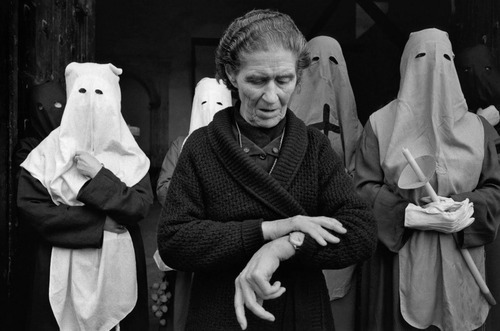Tell us about your approach to photography. How it all started? What are your memories of your first shots?
Elena Amagro (EA): I started with photography during my Bachelor degree in Fine Arts. I was a dreamy kid, they said I had a lot of imagination and I enjoyed drawing. As I grew up, choosing these things as a posible profession wasn´t an option. Adults said it had no future. I didn´t exactly know what I wanted but I knew what I didn´t want. I found the idea of spending my life working for others in an office with a given schedule everyday of my life overwhelming. I didn´t want that. I allways dreamt of discovering new worlds and living an intense life. All this finally ended in me studying Fine Arts. And that is how I got to Photography. It was one of the courses. I was lucky to have the Magnum Spanish photographer Cristina García Rodero as a teacher during my first year. She encouraged us to work. She spread her passion for people, beauty and light through her photography. We learned black and white darkroom. Digital photography did not yet exist for me. I feel lucky to have learned analogic photography. It makes you aware of the photographic process.
© Cristina García Rodero
How did your research evolve with respect to those early days?
EA: I believe that sooner or later during your life you come through with what you have inside, your worries or your dreams, or what you are really attracted to. All decisions you take, like studying one thing or the other, leads you there, directly or inderectly. What drove me was more my need to live happily then photography or drawing in itself. Since I enjoyed very much these activities I have succedded in being happy. It was a good idea to bet on them.
What made me definetely become a photographer has been my commissioned work. When I finished my studies, photography was what I liked the most from all the different disciplines that I had learnt. I was offered by chance to do photographic comissioned work for an architecture and building firm. At that time I was always taking pictures of urban spaces and buildings, so I found it interesting. Many times the buildings I had to photograph were not too inspiring but I took the job as an adventure and now it has become my way of life. For the past 8 years I have been working as a freelance photographer. At times I miss not having more time for my personal projects but I feel lucky to be my own boss and having my own schedule. Above all studying Fine Arts has made me take life less seriously, more like a game. I believe that dedicating yourself to Art or whatever you like the most is a privilege of a few that should be a right to everyone.
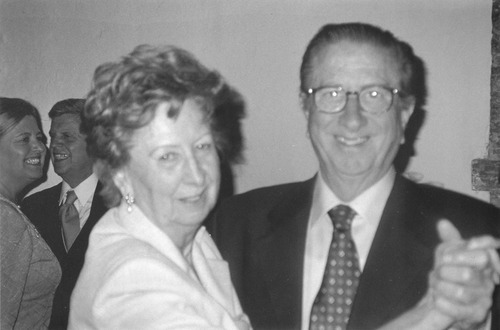
© Elena Almagro, ‘Photo Masks’
Tell us about your educational path. Bachelor degree in Fine Arts, UCM, Madrid, Spain. What are your best memories of your studies. What was your relationship with photography at that time?
EA: I find Madrid´s Fine Arts University very classical and academic, at least when I was studying there (1996- 2001). Nowadays it has changed. First of all students enter young and immature. It is not that much the age (18 years old) but the attitude. Besides the economical factors Spain´s conservativism doesn´t allow young people to leave their family and to live their own life until they are 30 years old aprox. Here in Spain it is usual to live within the family during the university years. We dont have the chance to evolve and mature some things until we are older.
Secondly, the first three years of a five year carreer were dedicated to learn all possible techniques and artistic disciplines. Drawing, painting, engraving, sculpture, photography, video… We were taught a bit of everything. Nevertheless it was a lot of fun. I found it very exotic to be dirty with paint, clay or whatever material we were using. Friends were also an important part of this experience. Between all the courses I enjoyed drawing and photography the best. Painting and sculpture where too much trouble. I soon found out that photography allowed me to register the world faster and easier, and that if I played later on with these images I could express ideas, talk about my worries or my dreams. I started gathering an archive of images of things from the world that were around me.
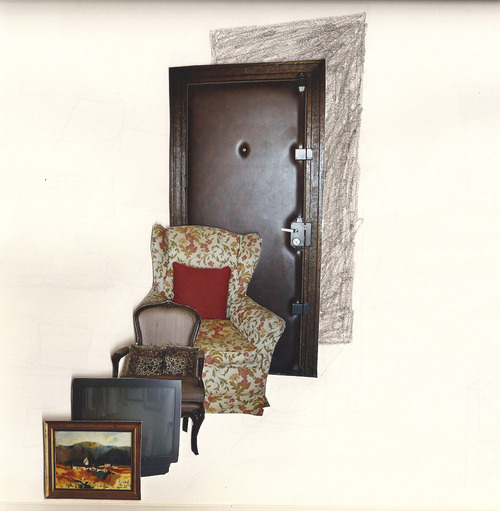
© Elena Almagro, ‘Urban Layers’
Together with my notebook to sketch down ideas and drawings, I took my camera everywhere. It was all about experimenting, so I sometimes photographed the drawing in the notebook, or the picture of the drawing in the notebook, or the shadow of what I drew projected on the notebook…. I played with different ways of representing.

© Elena Almagro, ‘Cuaderno de Campo’
I went to parties and family reunions always with the camera. Later on I realized that the camera could turn up into a mask, it was a way of hidding and protecting myself (I am a bit shy) from the outer world. The perfect way of looking and not be looked at. At that moment I was very critical with the world and liked to observe everything that went wrong. I don´t find this interesting anymore.
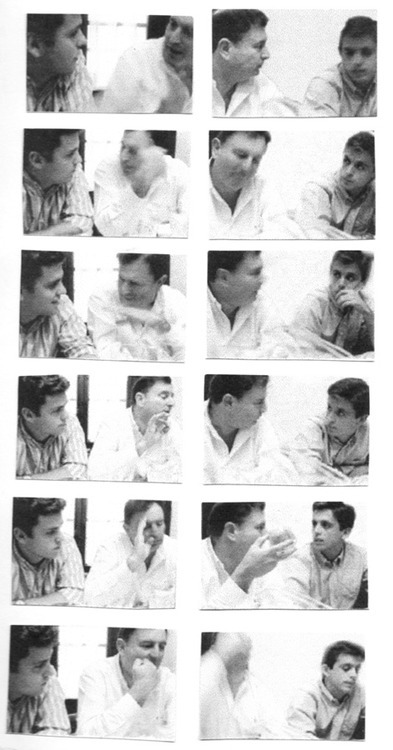
© Elena Almagro, ‘Family Layers’
Generally I got easily obsessed with whatever I was working with and used all the different media that we were taught to represent it. I worked by intuition. I didn´t really know what I was doing. As an example, I spend a long time working with the shadow, specially my own, in a formal way. But of course there is so much in a shadow, a lot of symbolism. I found the world of representation, a mental world from which I wanted to free myself. Through photography I discovered different layers of reality. Later on this subject has intrigued me very much in a more philosophical and personal way. The photography I did at that time whas a bit performatic made of conceptual games and exploration.
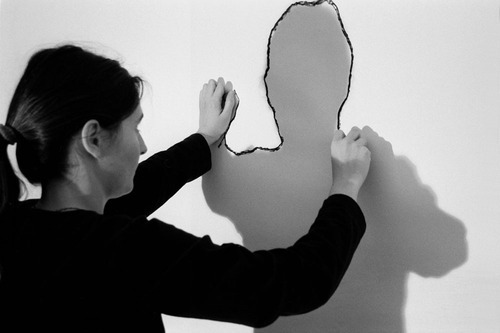
© Elena Almagro, ‘My Shadow and Me’. (Series of 20 pictures where I am trying to trap my shadow).
Instalation of the shadow changing dimensions. I made a thick wooden copy of my shadow standing up vertically like my body usually does, and a photocopy of my body laying down flat on the floor like my shadow usually does.
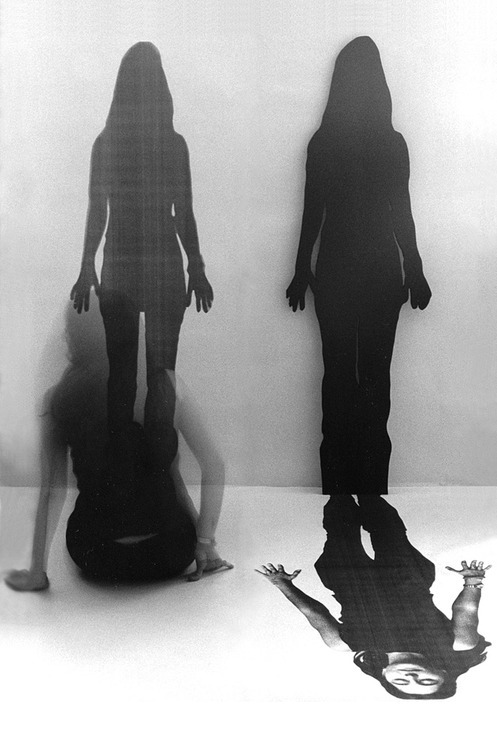
© Elena Almagro
What were the courses that you were passionate about and which have remained meaningful for you.
EA: This depended on the teacher. Many courses where about techniques and the teachers were only focusing and correcting their single technique. I found this boring. But other teachers made you go deeper and use that technique to express something. I encountered this type of teachers in different courses like for example Engraving with the artist Mitsuo Miura. But the courses that mostly helped me where the theoretical ones. And I am not an intelectual person but it was very revealing to understand society through its artistic manifestations. And to understand Art as a political, philosophical or existential worry. Until then for me it was just about form and composition. I was passionate about courses like Art after the death of Art, Mithology or Romantic Art with Tonia Raquejo or Agustin Valle. And most of these theory teachers also reviewed your portfolio and had more things to say then just a comment on the colour or the form.
I believe that learning the basics is really good. We had like 12 hours a week of natural drawing and I liked that. Like musicians that have to study and practice a lot to gain skill. But without creativity and inspiration it is worthless and can get boring.
Any professor or teacher that has allowed you to better understand your work?
EA: The artist Urs Luethi during my Erasmus scholarship in Kassel HBK Kunst Hochschule. I spent my last year of school there. I liked it so much that I stayed there half a year more. It was the first time that somebody finally clearly told me that you are handling a language when you create.
I had no obligation. No courses to go to. No teacher or grades to satisfy. Only an atelier with my key to go whenever I wanted. Students where older, more mature, they knew what they wanted. The teacher went to school only once a month or less. You needed a private appointment with him to get your review. I think I had only 4 or 5 of these reviews with him but I learned more then in any course in Madrid. At the begining I was blocked and paralized. I didn´t know what to do. I was used to doing things in response to what others expected, to obtain a note or external recognition. But slowly I began to connect with me and my work and started what later on turned out to be the project Horizonte Finito.
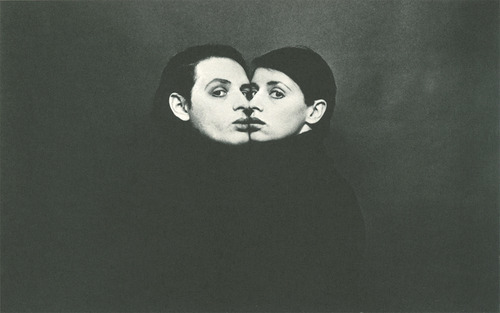
© Urs Luethi
What do you think about teaching methodology in the era of digital and social networking?
EA: I find social networking and the internet in general very useful tools to grow and learn. Your work can reach more people, it is easier to get inspired and learn from others. But it is also a masked mirror of our dark side. You have to be aware of your uncertainties to not get trapped. Its deceptions are the common ones to human beings but reinforced since it is such a powerful tool. I am speaking about human weekness such as building your creative process only for the sake of external recognition or turning anxiously your work into a fashion shop window for example.
I think that nowadays besides learning history, philosophy, poetry, art, techniques… we have to learn to believe in and trust ourselves. Specially in such an open and subjective matter as Art. To make the best out of our training methods depends not only on the benefits of digital media but more and more on virtues such as honesty, confidence and reliability. Internet offers so much information. It can be exhausting. Its speed can make you disregard your own process. I believe Art is made by constant and honest work. With freedom, fun and a lot of passion. Therefore I think these abilities should be taught or at least taken in relevance and spoken about more and more in schools, faculties and workshops.
As a matter of fact the workshop I´ve teached in Madrid´s University called Artist´s Self Esteem together with the artist Gabriela Bettinni worked on these concepts. The amount of trust you have in your ideas, your intuition, your work, your taste, basically yourself … is as important and powerful as the amount of talent or hours you spend in your work. I don´t mean that you cannot evolve or change taste or learn from others or improve your work… But I believe that being who you are is what makes you special, what makes your work special. I´ve observed that all artists I admire do this. For the workshop we decided that the best way to acknowledge these values and virtues was to speak about them. So we interviewed via skype different artists and photographers to personally ask them how they handled their doubts, uncertainties, fears, failures or succes in their artistic work. The interviewed artist were great. They said so many interesting and inspiring things, I learned a lot for myself by this experience. It was great to be able to speak about the emotional and personal experience of Art.
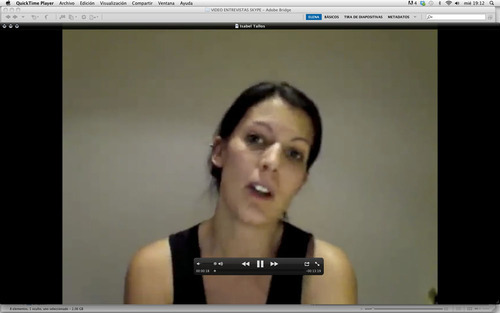
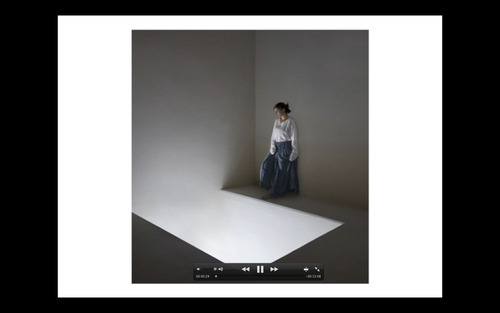
© Elena Almagro, ‘Recorded skype interviews with the artist Isabel Tallos’
You’ve participated as well to workshops, like the one with Mark Steinmetz. Tell us about these experiences in general and how they affect your personal research.
EA: During the portfolio reviews, common in every workshop, I have discovered that many times our ego stops us from listening to what the teacher has to say about our work and instead makes us defend the work as if it was being attacked. This is a pity and the student finally does not benefit from the review. I think it would be great if the teachers were aware of this when it happens and were able to handle it with care so that the interesting comments and views they have about the work of the students could actually reach them.
Secondly everybody has something to say, so if your ego is not too afraid of failing or too strict and demanding with oneself you can always learn something from everybody, not only from master teachers. And when some master photographer gives his opinion you have to observe, before you emotionally open yourself to receive it, if he has educational abilities or not, and if his personality and his work connects with yours. There are very good photographers who dont have the ability to see the work of people whose work don´t have the same style and interest as his own. So they will always guide you to their own territory. This is quite normal, yet students need to be aware of how much power they allow to the teacher while they should never stop believing in themselves and in the things they like. You may admire very much the work of someone but that doesn´t make him necesarily a good teacher. Anyway there is always a lot to learn from the artist whose work you admire. During workshops they share with you their passion and observations and that is very inspiring.
In Mark Steinmetz workshop he continuosly talked to us about light, form and composition. I enjoyed that very much. It may sound boring and moreover nowadays when we are so conceptual and it looks as if for something to be great it has to be complicated and hold something more behind. I think the workshop disappointed some people because such great work is supposed to have a great intellectual author behind. But he actually only spoke about light and composition… Mark’s works is not about words, I think is more about the magic of life on its own. Personally Mark told me that I had to take a decision between being a poet or a scientist. I liked that observation, although it is true that I can also be both.
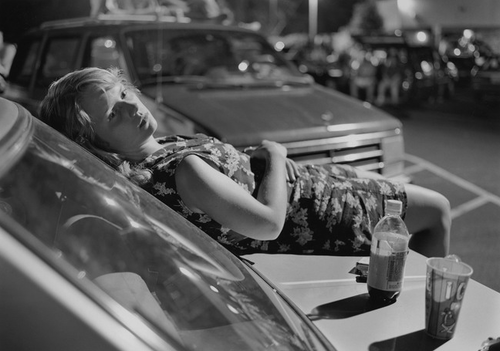
© Mark Steinmetz
At the beginning work is an unconscious manifestation. I love to see how a teacher connects with the work of a student and sees things and helps him to be aware of what he is doing. It is a feedback process for the teacher as well.
Of these workshops what hit you from the point of view of methodology and what would you improve or deepen?
EA: These tipe of workshops are for grown ups. By this I mean that the workshop is like the teacher is. And that cannot be changed. You have to accept it. To make the most of it depends not only on the teacher but also on the student. Of course I am speaking about workshops made by interesting and responsible professionals who give their best for the correct functioning of the workshop.
What I find most interesting is the things the teacher shares with you about his process, his thoughts, his research, his observations. It is an opportunity to see how another person whose work you admire finds solutions to problems you may have also encountered. The more generous the teacher is in sharing his experiences and the less fear he has to show himself as he really is the better. I once took a workshop with the photographer Ricardo Cases and he is such a charismatic, passionate and cheerful person that you got trapped by his attitude. With him you received a shot of possitive and working energy that made you work more, try more, risk more, I learned a lot from his attitude towards life and in consequence towards photography.
Workshops have a lot of improvisation and it depends on the deepness of the teacher to reach deeper levels of work.

© Ricardo Cases
About your work now. How would you described your personal research in general?
EA: I am more into the emotional side of Art then the intelectual. I´ve based my work on intuition, finding a mirror of what my spirit needed each time. For a long time I was feeling angry and deceived with the world because it was not perfect. It was not what I expected. Not like what I dreamt of. Currently I am not so worried about these things anymore. I feel easy and quiet therefore my pictures seek and cherish this peace and stillness. Matched steady path in my work is the search for paradise, freedom, and happynness. I think that deep inside nature has always represented these values for me.
My latest proyect called Safari comes from these dreams and wishes. As a kid National Geographic films and pictures had always moved me. I dreamt of discovering exotic places, animals and people. Since this is imposible because in my reality this idea of paradise doesn´t exist, I undertake a photographic Safari in my own rutinary surroundings, where I live, my own habitat the city of Madrid. I accept reality with its limitations so I use the real world with its imperfections to work with. It may be a sick and weak world but it is alive and is real.

© Elena Almagro, ‘Safari’
Do you have any preferences in terms of cameras and format?
EA: I have never been too much into exploring different cameras and formats. I have always worked with what I easily had. Before, as a student I had an analogical nikon reflex camera that I bought for my photography courses. As soon as I started working with my ideas I didn´t worry about techniques. When I needed for example a door or a cloud to represent an idea I just took a picture of that. I got my colour film developed in a lab and printed on a 10x15cm photographic paper. There was no photoshop to correct light or colour. Since I came from Fine Arts I had no problem in cutting out that cloud or door, as if it were a drawing. I just wanted to represent it. I felt that freedom. Without being aware of it I started doing collages. Although collage in itself did not interest me too much. Cutting out photographic paper made me encounter what photography means conceptually, a representation of reality. This matched with my worries and interest so it was perfect.
Later on I started working as a professional commissioned photographer so I had to get a better camera and improve the quality of my pictures. Nowadays I have a digital reflex camara canon 5D that gives me the quality I need. I correct the colour and light with camara raw and photoshop. My pictures are much more focused and technically better. I use this camera also for my personal projects since it is what I have right now. But I miss the freedom of playing that I had before.
Tell us about ‘Horizonte Finito’?
EA: As I said before my work has always been an inner search. Being nature the representation of that search as the symbol for the real, happy and free state of human kind.
Horizonte Finito means finite horizon. It was created while I was in Kassel. But it whas really conceived from an oppressive feeling I had in Madrid before leaving. I arrived to Germany with my photographic archive. I specially collected streets with buildings because they shaped my reality. It was what I had around. In Germany I sometimes got bored, as I said I had no obligations and I didn´t know what to do. So one day without thinking I drifted in a mechanical and unconscious act and started to cut out windows and doors from these pictures. I didnt think about what I was doing and kept on cutting.
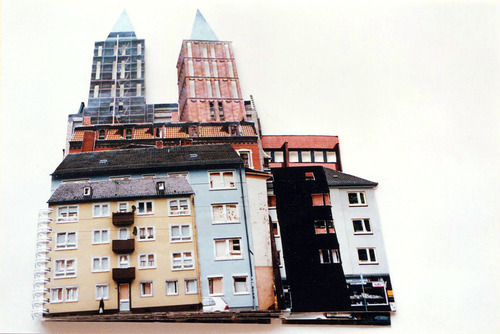
© Elena Almagro, ‘Horizonte Finito’
On the other hand I had always wondered about the borders between city and countryside, nature and artificial, reality and fiction, what was really real and what was learned or imposed by others. I asked myself where did the city walls that didn´t allow you to see the horizon started or ended. In Madrid´s downtown you are most of the time not able to see further on then three or four hundred meters. The horizon (specially from the sea) is clean, no noise, no buildings, no words, no nothing. Just an infinite line in which to rest your gaze and dream.
So I crossed the city in a straight line in search for the horizon. With my camera I took pictures of all the buildings I bumped into and didn´t allow me to keep on going. To be able to go through them I cut out the windows and doors of these pictures. I build a city notebook with these pictures. A catalogue of the city. Being each page a photo of a building.
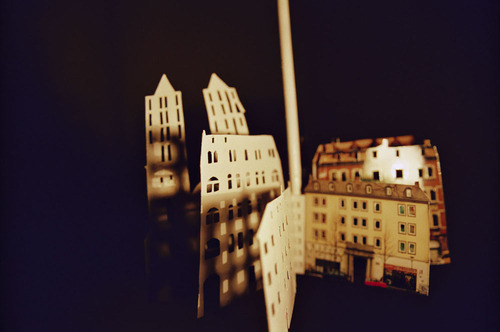
© Elena Almagro, ‘Horizonte Finito’ (City Notebook)
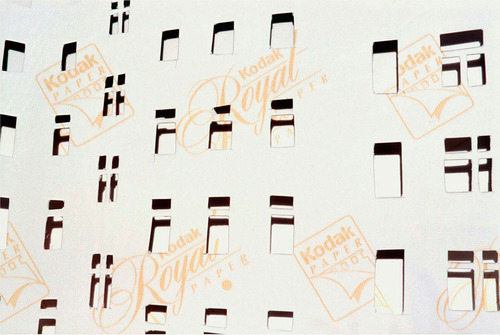
© Elena Almagro, ‘Horizonte Finito’ (Backside page)
View of the instalation of the city notebook hanging as a mobile at the Horizonte Finitosolo Show in Centro de Arte Joven Av. de América. A sheded light on the notebook casts a shadow of the city. The small and weightless mobile turned slowly around in circles with the presence of visitors, making the projection of the shadow change as if it was a movie.
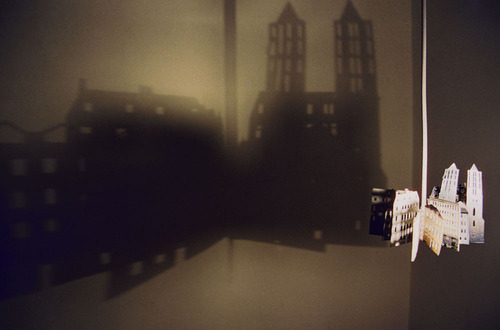
© Elena Almagro, ‘Horizonte Finito’
Formal exploration and game gave me clues and ideas on how to go on. I took macro photos of the photos in the notebook and discovered a flat, two dimensional world similar to a stage or setting. Different layers of reality that I wanted to cross.

© Elena Almagro, ‘Fotografías de Una Ciudad’
Even the horizon was a picture of the horizon that you could tear up apart to discover deception.
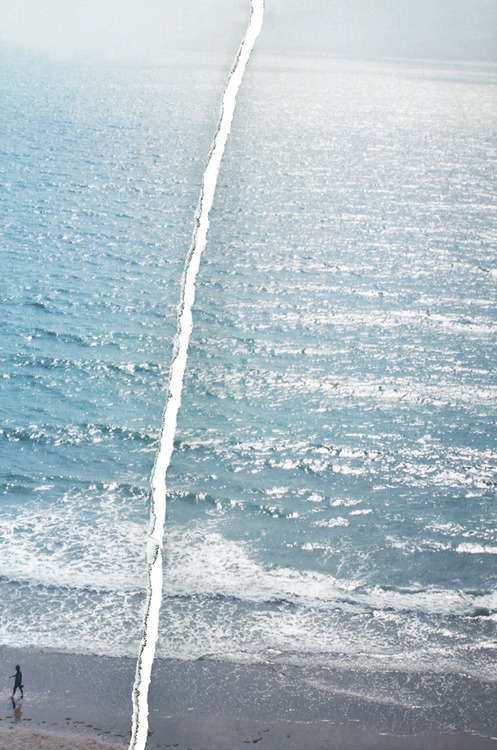
© Elena Almagro, ‘Fotografía Rota’
All my dreams felt like illusions, not real. I felt that experiences such as travelling to those exotic places that I saw on TV were limited. Either they didn´t really exist, they were only a small crop of reality or your tourist condition doesn´t allow you to really be there. At that time I had the chance to travel to Chiapas in Mexico for one month. I didn’t like my tourist condition.
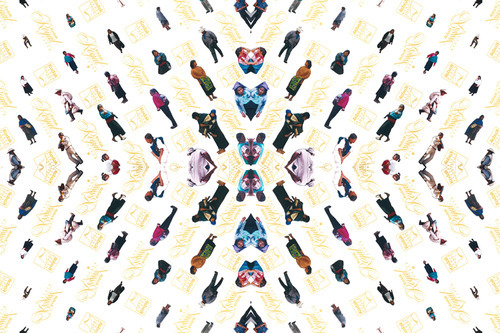
© Elena Almagro. Estampado Chiapaneco. A decorative paper wall simulating a piece of carpet or handcraft brought as a tourist from an exotic destination. It is the back of a kodak photographic paper decorated with mexican indians following a pattern.
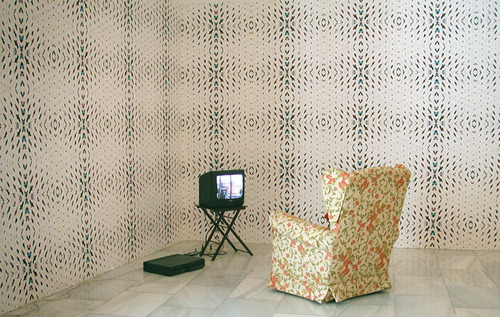
© Elena Almagro. View of the installation of the wall paper at the Horizonte Finito solo show in Centro de Arte Joven Av. de América.
Is there any contemporary artist or photographer, even if young and emerging, that influenced you in some way?
EA: Duane Michaels at the beginning. His works talks about different levels of reality and awakes our fears. I also found The Truman Show, Matrix or David Lynch´s movies very revealing with it´s parallel worlds.
Nowadays I am more into searching for fantasy in the routine, normal and not exotic. To transform reality into a story. For example photographers like Alessandra Sanguinetti, Rinko Kawauchi or Stephen Gill. I also like the emerging photographerTatjana Schloer whose pictures capture the inner world of kids. I like everything that shows our world as a cartoon network, magical, fantastic. And when this happens in a photo is even more amazing. I also enjoy very much and get inspired with the painting work of Antonio Ballester Moreno.
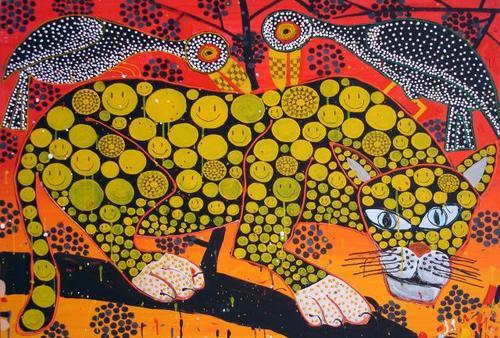
© Antonio Ballester Moreno
Three books of photography that you recommend?
EA: I have started to discover the world of photobooks two years ago. I have gotten the chance to read a few. I actually read them to study the artist who made them. To wonder how he is or what made him take decisions. To learn about others. I appreciate very much the quality of papers and designs. But I find the photobook world a bit fetishist sometimes. What really touches me is the photography inside them. I love Mark Steinmetz´s books for example (South Central, South East and Greater Atlanta) because his pictures inspire me. Even though as books they are not so innovative and special as what is been done right now.
Is there any show you’ve seen recently that you find inspiring?
EA: I recently saw an exhibition of the photographer Antonio Xoubanova at Centro Centro in Madrid. I liked the way he played with the pictures. Framed in different ways, hanging in different positions. It gave more meaning and life to his work.
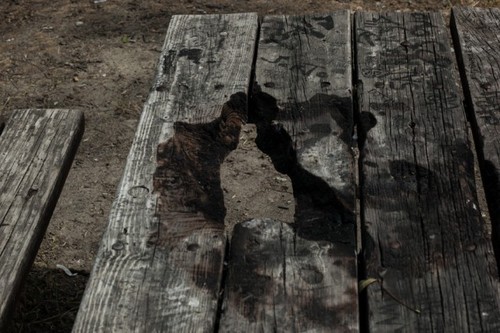
© Antonio Xoubanova, ‘Casa De Campo’
But I usually have a problem with exhibitions. I don´t have enough patience. Maybe I´ve turned lazy or maybe there is so much, too conceptual or political most of the times, that it just doesn´t interest me. I have to admit that I am usually not inspired by them. At least from what I see in Madrid. I find more inspiration in everything that surrounds the world of Art. Blogs, artist´s webs, lectures, events, workshops, sharing interest with partners or friends…
Projects that you are working on now and plans for the future?
EA: Right now I am working on nature. But this time real nature! There is a big park near my house that I visit a lot. I walk around in search of a bit of peace and quiet after a stressful day of work. To balance myself from the chaos and noise of the city. I find nature impressive. It is alive, it has its own energy. I take my camera with me. It helps me to connect. Right now I am working with that. I still don’t know exactly what I am looking for. Sometimes I think I am looking for fairies… Or at least for nature´s own magical world.
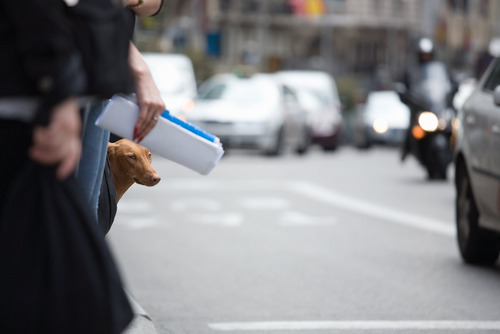
© Elena Almagro, ‘Safari’
The difficulty right now is that I am working exclusively with photography. No drawings, no collages… I find it so much harder to find what I am looking for. I have to learn a lot about the photographic process…
At the moment my first step towards nature has been the Safari project. I don´t know where my new pictures will take me to. I want to feel free and let the pictures speak for themselves. Not impose them what I want from them. Making exclusively photographic projects is a challenge for me. Its fine and poetic languaje requires me not to demand anything and listen more to what my pictures have to say. It is not like before. I am trying to learn that through my pictures.
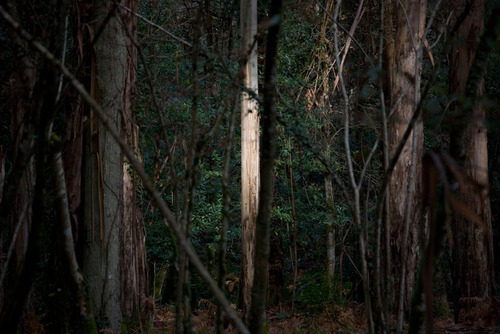
© Elena Almagro, ‘Trees’
The only thing I know is that I am photographing a lot of trees. Sometimes I fantasize with the idea of creating an imaginative world like in Walt Disney movies where animals and plants speak and feel. But as I said I find it complicated to do this with documentary photography. At the same time that could also be the fun of the work.
---
LINKS
Elena Almagro
Spain
share this page
